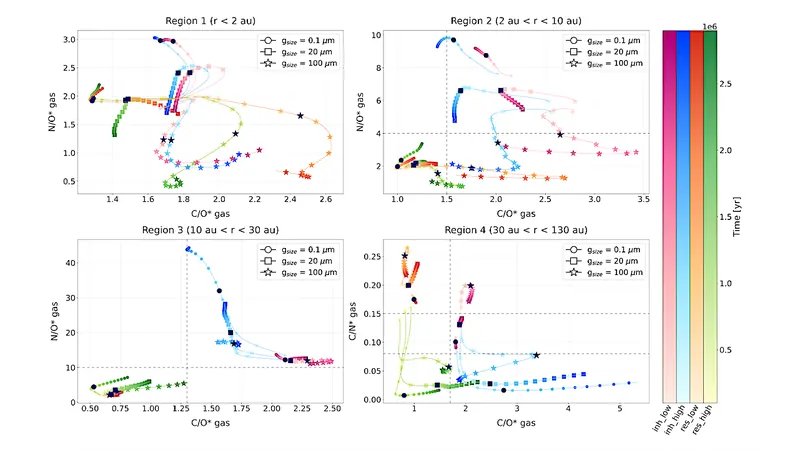
Surprising Delay: Antarctic Ozone Hole Emerges Later Than Usual in 2024
2024-09-16
Author: Wei
Surprising Delay in Antarctic Ozone Hole Formation
In a fascinating turn of events, the Copernicus Atmosphere Monitoring Service (CAMS) has reported that the formation of the Antarctic ozone hole for 2024 has commenced later than anticipated. This anomaly stems from significant shifts in stratospheric temperatures and wind patterns, resulting in a delayed atmospheric depletion process usually characterized by the seasonal ozone hole.
Typical Emergence of the Ozone Hole
Typically, the Antarctic ozone hole emerges in mid to late August and closes by late November. However, 2024's developments show a much later onset largely attributed to disruptions in the polar vortex following two notable episodes of sudden stratospheric warming in July. By September 13, 2024, the area of the ozone hole measured around 18.48 million km², which is surprisingly smaller compared to previous years at this point in the season.
Importance of the Ozone Hole Phenomenon
The ozone hole phenomenon is vital as it represents the substantial depletion of the stratospheric ozone layer, making it a critical environmental issue. As per CAMS data, it was observed that total column ozone values across much of Antarctica remained above 220 Dobson Units (DU) for a longer duration than usual, demonstrating a slight reprieve from the expected depletion.
Insights from Laurence Rouil of CAMS
Laurence Rouil, Director of CAMS, emphasized the intricate interplay of various factors influencing the formation of the ozone hole, including volcanic activity and climate change, but highlighted that human-made ozone-depleting substances have the most significant impact. Rouil commended the success of the Montreal Protocol, established in 1987 to phase out substances that deplete the ozone layer, stating, "This triumph illustrates humanity's potential to mitigate environmental issues through global cooperation and science-driven initiatives."
Cautions Against Misinterpretation of Data
Despite this year's delay in ozone hole formation, experts caution against assuming it signals a definitive recovery of the ozone layer. The variability in atmospheric conditions is a natural occurrence and should not overshadow the ongoing threats from human activity. Nonetheless, the Montreal Protocol serves as a beacon of hope, with projections indicating observable improvements in the ozone layer over the next four decades if current protective measures remain in place.
Continued Monitoring and Global Cooperation
As the international community prepares to observe the International Day for the Preservation of the Ozone Layer on September 16, the emphasis on the success of collaborative environmental efforts grows ever more pertinent. CAMS continues to offer updated charts and forecasts regarding the ozone hole, playing a crucial role in monitoring and understanding this significant atmospheric phenomenon.
Stay tuned for more updates as science and global policy work in concert to protect our atmosphere for future generations.





 Brasil (PT)
Brasil (PT)
 Canada (EN)
Canada (EN)
 Chile (ES)
Chile (ES)
 Česko (CS)
Česko (CS)
 대한민국 (KO)
대한민국 (KO)
 España (ES)
España (ES)
 France (FR)
France (FR)
 Hong Kong (EN)
Hong Kong (EN)
 Italia (IT)
Italia (IT)
 日本 (JA)
日本 (JA)
 Magyarország (HU)
Magyarország (HU)
 Norge (NO)
Norge (NO)
 Polska (PL)
Polska (PL)
 Schweiz (DE)
Schweiz (DE)
 Singapore (EN)
Singapore (EN)
 Sverige (SV)
Sverige (SV)
 Suomi (FI)
Suomi (FI)
 Türkiye (TR)
Türkiye (TR)
 الإمارات العربية المتحدة (AR)
الإمارات العربية المتحدة (AR)